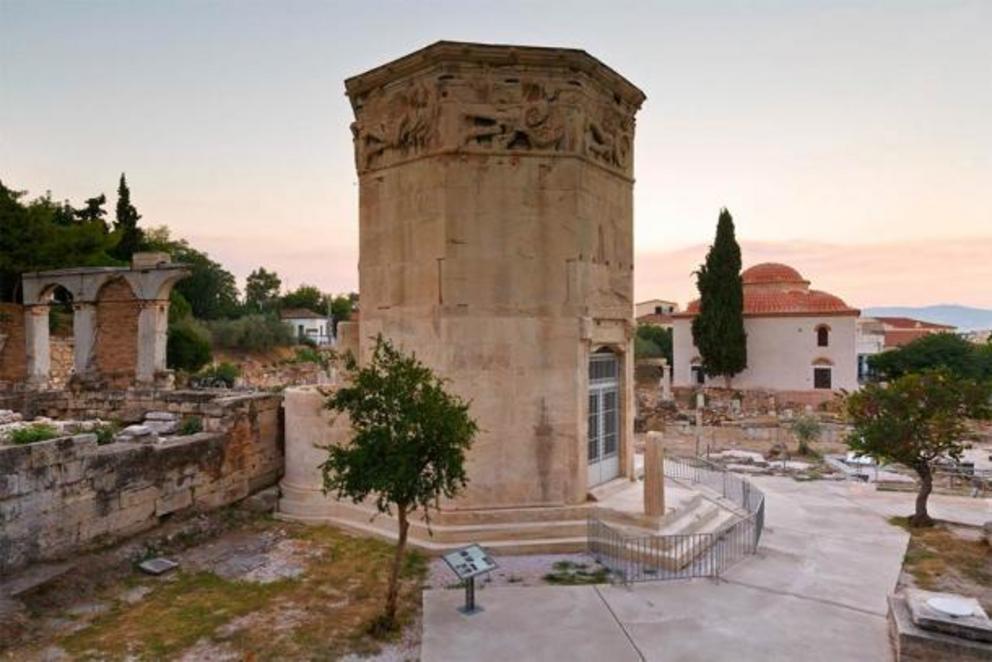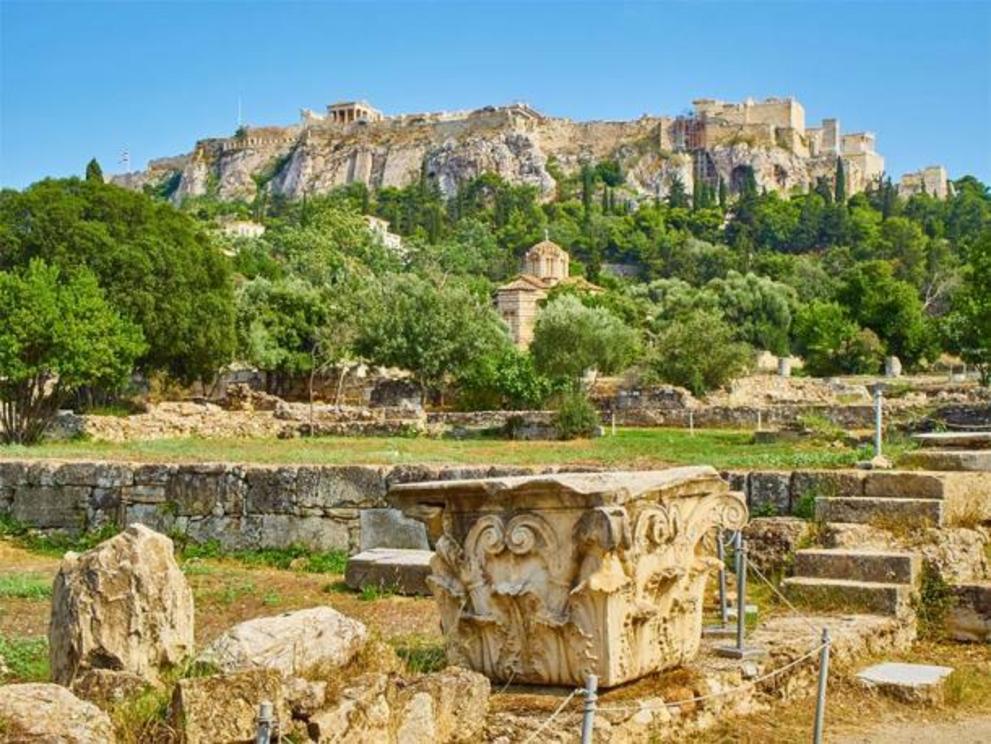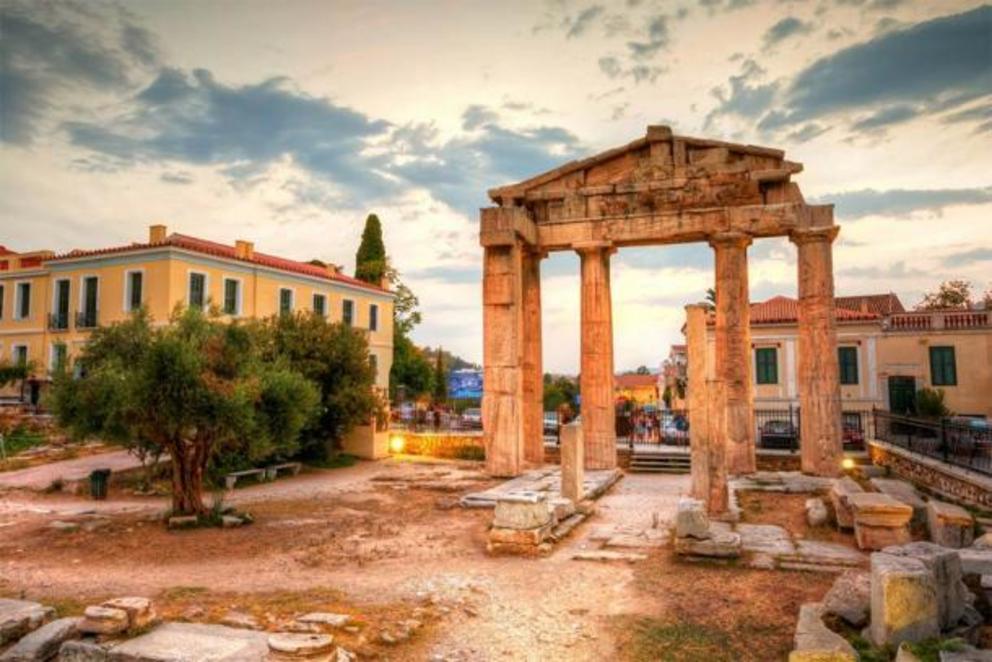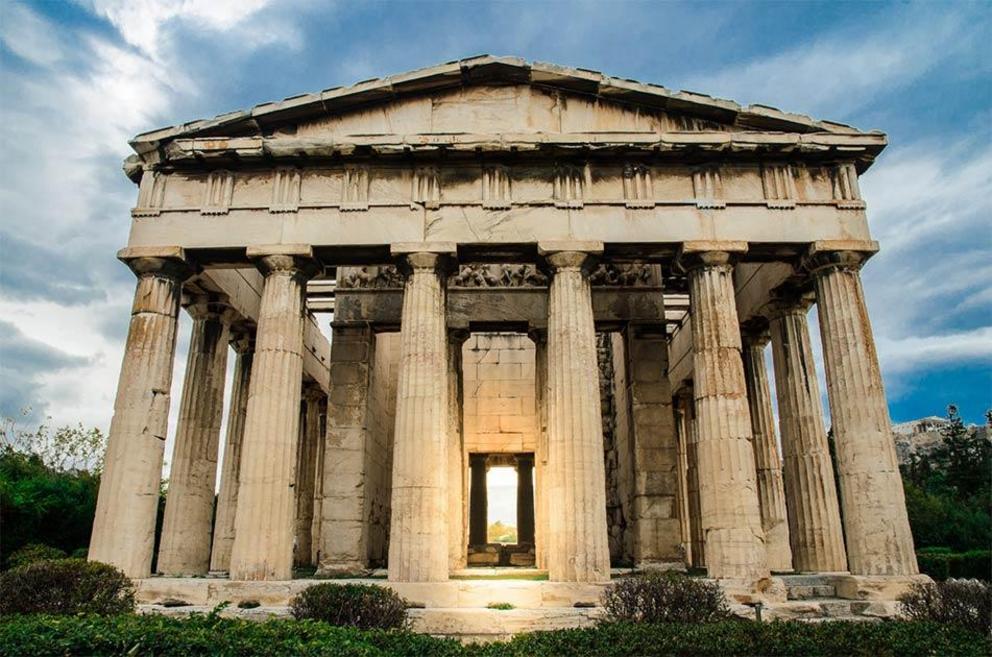Athenian Agora, where some of the world’s greatest philosophers gathered
Ancient Greece, and Athens in particular, played a crucial role in the development as well as the history of Western Civilization. The center of Athenian life was the Agora, an open space at the heart of the city that served as a meeting ground for various activities. Many great figures of Greek culture walked and conversed with their fellow Athenians here. Much of the Agora has now been restored and it contains remarkable monuments from the Greek and Roman era.
The History of The Agora: Heart of Athens Golden Age
This site has been occupied since the Stone Age and was used as a burial space during the Mycenae era . It only became a public space during the rule of the great lawgiver, Solon. The Agora was the political, commercial, religious and cultural heart of Athens.
The Persians devasted the area when they occupied Athens in 480 and 479 BC, but it was built up during the time of Pericles in the 5 th century BC. Building continued until the 2 nd century BC when the Agora took its current form.

Plato and Socrates, the great ancient Greek philosophers ( anastasios71 / Adobe Stock)
The Agora was often used during festivals, especially those of a religious nature. It was also the site of many social, cultural, and economic activities. It served as the meeting place of Athenians such as Socrates, Plato, Sophocles and the many others who laid the foundations for Western Civilization. Philosophers and other intellectuals gathered in the area for centuries.
The Romans under Sulla besieged the city in 89 BC and the area was badly damaged, slowly recovering during this period. The city of Athens expanded, and the Romans built a forum near the original Agora.

Remains of the Roman Agora and Tower of Winds in Athens, Greece. ( milangonda / Adobe Stock)
During the Third Century Crisis in 267 AD, the Germanic Herulae tribesmen sacked Athens and the Agora was badly damaged. Under successive Eastern Roman Emperors these public spaces recovered and many of the temples were Christianized.
In the 6 th century AD, the Slavs occupied Athens and with the city all but deserted, the Agora ceased to be a commercial, religious and political center. When the Byzantine Empire recovered in the 9 th and 10 th century, they reconquered Athens and the area became a residential district.
The first excavations of the site occurred in the 19 th century and work has been continuing on the large complex ever since. There has been a great deal of restoration work carried out in the forum.
The Athenian Agora Through the Years
Excavations have revealed some 30 major buildings and sites from the ancient Athenian forum. The outlines of the peristyle court, the fountain house, and the mint can still be seen. On the south of the site is the south Stoa, an area once sheltered by rooves which were supported by columns. Athenians would gather here and discuss politics and philosophy.

Ruins of Odeon of Agrippa, Ancient Agora of Athens with Church of the Holy Apostles and the north slope of the Athenian Acropolis in background. ( Álvaro Germán Vilela / Adobe Stock)
The remains of the Strategeion, where the ten generals of the city would meet to discuss military strategy , is still clearly visible. Nearby is the New Bouleuterion, an Athenian assembly place, which still has the stone seats where the council members met during momentous events such as the Persian Invasion. In the north-west of the ancient public space stands the Temple of Apollo Patroos.
The gymnasium of the ancient Athenians has a relief of the giants and tritons which has been restored by the Greek Archaeological Society. The Stoa of Attalos was reconstructed and is now a museum containing many of the artifacts excavated from the forum in recent decades.
On a hill near the Agora is the Agoraios Kolonos , the columned remains of the meeting place for the city’s craftsmen. Adjacent to this is a restored temple to Hephaestus, the ancient Greek god of smiths and handicrafts. The temple is almost complete, and the visitor can wander around its columns.

Remains of the Gate of Athena Archegetis and Roman Agora in Athens ( milangonda / Adobe Stock)
The ruins of the Stoa Poikile , or Painted Porch, was one of the most famous public spaces in ancient Athens. Great paintings were put on display, such as a famous one depicting the Battle of Marathon. Among the other notable monuments that can be seen in the site are altars and shrines to Zeus and to Ares, the Greek gods of thunder and war.
The Byzantine church of Agioi Apostoloi , a fine example of Medieval architecture built around 1000 AD, was restored and is adjacent to the Agora.
To the east of the ancient Agora is the archaeological site known as the Roman Agora, which dates from the rule of the emperors. Among the well-preserved ruins is the Odeon of Agrippa and the Gate of Athena Archegetis. Perhaps the best-known monument in the Roman Forum is The Tower of the Winds which is an octagonal clock tower that dates from the 2 nd century AD.
Visiting the Athenian Agora
The Agora is now an archaeological park and a fee is charged to enter and hire a tour guide. It is located in the heart of modern Athens and it is therefore easily accessible. A tour of the Agora can take up to one hour.
Top image: Hephaestus Temple in Agora ruin, Athens, Greece. Source: kevinlert / Adobe Stock

